This resource provides guidance on language to help organizations more effectively communicate about racial economic equity. This document includes definitions of important terms and concepts for understanding racial economic equity, the racial wealth divide, and racial wealth equity as well as design guidelines on visually depicting diverse communities. This guide has relevance for a range of organizations interested in communicating about the important link between racial equity and job quality for those who want to advance racial equity.
This webpage offers guidance on how to protect the health and safety of domestic workers during the COVID-19 pandemic. Included are resources specifically for different domestic work occupations, such as housecleaners, nannies, and caregivers. There is guidance on how to speak with employers about returning to work and sample agreements between workers and employers to ensure safety in the workplace. These resources are geared towards domestic workers, but can also be used by worker advocates, workforce professionals, and employers to support worker safety–and can be applied to public health emergencies beyond COVID-19.
The future of work has received an avalanche of attention over the past several years from the media, academics, and policymakers. However, most discussion has been theoretical and speculative. And the challenges facing opportunity youth have largely been left out of this conversation. Given this context, the Aspen Institute Economic Opportunities Program and Aspen Institute Forum for Community Solutions, with support from the Citi Foundation, developed a practical approach and toolkit that community leaders can use to begin to learn how the future of work is playing out right now in their local economies. The toolkit includes a framework and questions to guide conversations with employers and young adults to learn from them about the nature and structure of work in specific occupations and what’s changing now; a guide to resources for conducting background labor market research to inform conversations; and sights from three organizations that pilot-tested the approach and toolkit in their communities
Good Jobs, Good Business is a comprehensive toolkit for small business owners seeking to improve job quality. The toolkit includes sections on Employee Compensation, Scheduling and Paid Leave, Hiring and Professional Development, Employee Engagement, Health Benefits, Retirement and Wealth Building, Racial Equity, and Covid-19. Each section helps users develop a business case and provides guidance on implementing new policies. This resource is designed for small business owners but can also be used by partners (including lenders and workforce development organizations) to coach businesses on job quality improvements with potential business benefits.
This step-by-step guide for employers and the practitioners who work with them provides information about how to foster inclusion for refugees in the workplace to harness diverse perspectives and drive positive business outcomes. It makes the business case for hiring refugee employees and suggests six inclusion initiatives to support refugee retention.
While workers are granted basic protections against discrimination under the Civil Rights Act of 1964, these rights are not always enforced. This fact sheet provides a walkthrough of the Equal Employment Opportunity Commission (EEOC) filing process to take legal recourse against discrimination. Included are sections such as a description of your legal rights, information needed to file a charge, the investigation, the employer’s response, and mediation and settlement. This resource will be most useful for workers facing discrimination and their advocates.
This question bank includes targeted questions that workforce development professionals can ask retail business representatives to have learning focused conversations and deepen relationships. The tool includes questions to help understand a business and its workforce, employee engagement, development and advancement in a firm, and wages and scheduling practices.
To make the business case for improving retention, employers can use this simple calculator to get a ballpark estimate of hard costs of turnover. Partners can complete this exercise with businesses to show the value of their services or talent management practices that reduce turnover. Unlike many other turnover calculators, this tool includes both direct costs, such as the cost of hiring or orientation, and indirect costs, such as lower employee morale or poorer customer service.
In this paper, authors Karen L. Corman and Ryne C. Posey outline several key considerations for implementing a pay audit to assess pay disparities among current and incoming staff. Topics explored include the potential benefits and drawbacks of pay equity audits, the purpose and parameters of the audit, privilege considerations, practical guidance for conducting the audit, and post-audit considerations and remediation strategies. HR professionals and other individuals involved in conducting pay audits may find this resource useful. Additionally, those who work with employers may be interested in sharing this with their partners. You may access this downloadable document by clicking on the “PDF” symbol towards the top, right-hand side of the linked webpage.
This toolkit by the Department of Labor provides steps and resources to start and register an apprenticeship program. When delivered appropriately and connected to advancement opportunities, apprenticeships can strengthen job quality by increasing worker stability and mobility. This toolkit could be particularly useful for a business or labor organization, a workforce intermediary, a community-based organization, or an education institution developing an apprenticeship program.
